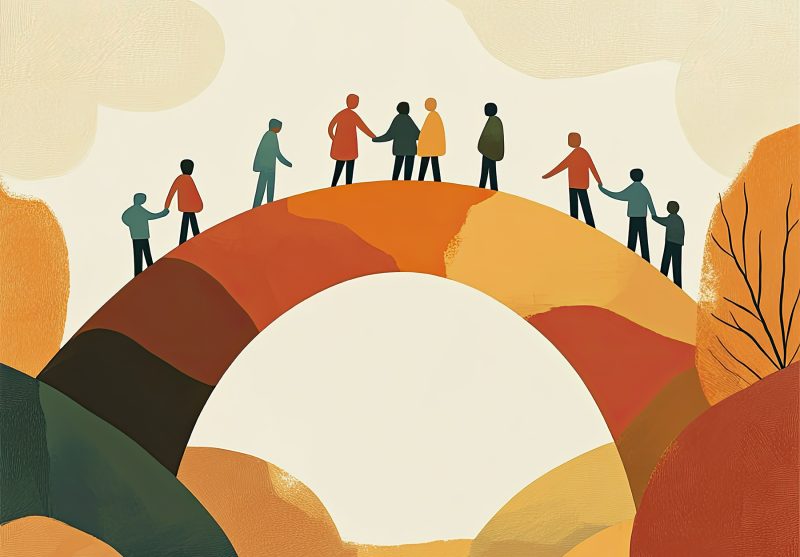WHEN ONE IS IN A POLARIZED SITUATION, it is very difficult to step back and see both positions clearly. People on each side truly believe they have the right answer and that those on the other side are idiots, liars, in a cult trance, or just plain stupid losers with no merit.
What we are attempting to do in this article is to summon respect for the people on both sides and to help all our readers understand how both positions came to be. Respect for the people on both sides does not imply that both positions offer the best options. One may believe that one side’s position carries the day while still respecting those who differ—especially upon understanding why they might believe as they do. While the larger choice at present is between these two models, the underlying choice is whether to go to war or solve the problem, whether to remain polarized or find a path out of deadlock.
Let us briefly examine the two major positions.
The Economic Model is familiar. It is the path we have been following. It is rooted in the industrial era, from which we are now emerging. This path was shaped by the sciences developed during the Scientific Revolution of the 16th century, which fostered a spare, efficient mindset.
This mindset promotes linear thinking—moving efficiently from one point to the next. When solving a problem, one isolates and focuses on its parts. Hierarchical structures are preferred, and individualism and progress are emphasized. During the industrial era, corporations flourished in this environment, expanding from small operations to national, then global, enterprises. Initially, manufacturing held primacy; over time, technology took center stage, and now artificial intelligence (AI) commands attention. This model is based on competition—individuals striving for the most progress, highest profits, and greatest power. Many have thrived in this matrix, amassing vast fortunes.
The Living Systems Model is less familiar but gaining traction. It is described by the sciences of chaos and complexity theory and by systems thinking. It is holistic, attending not only to the parts of a system but also—and primarily—to their relationships within and among systems. Context is critically important. When addressing a problem, one must consider its location, the stakeholders involved (those with a relationship to the issue), and peripheral factors affecting it. In pursuing goals, nonlinear thinking anticipates that both path and objective may evolve. The best path may shift, drawing on elements from the context to gather insights and inform movement. Communication and access to new information are essential. Awareness of all forces acting on the system is required.
The living systems model builds on the understanding that our world—both human and environmental—is messy. It is rooted in a mindset equipped to navigate messiness, change, and dynamism. It is flexible and open. Because it incorporates fuzziness, randomness, and irregularity, it is the most suitable model for solving complex problems.
Two models: one oriented toward the past, one toward the future. Those who benefited from the economic model—modern industrialists—are adept in its framework. It worked extremely well for them (they have, after all, become billionaires), so they believe that turning America into a giant for-profit corporation is the best path forward. Streamline operations, pursue the goal, and eliminate whatever impedes progress. The appeal is understandable.
However, this approach does not account for unintended consequences. Its outcomes include not only prosperous multinational corporations but also widening wealth gaps, accelerating climate change, diminishing natural resources, and mass species extinction. It resists efforts to address racial injustice or support marginalized populations. Those outside the corporate sector are more likely to see the failures of the industrial paradigm and to recognize that its core assumptions are no longer sustainable.
Another dimension of polarization deserves attention. The industrial era delivered immense benefits to the United States, enabling it to become arguably the most successful democracy in the world. Today, some proponents of extending the economic model find democracy too cumbersome. Autocracy—a system governed by a single individual with absolute power—offers the stripped-down efficiency they desire. We are now witnessing efforts to dismantle American democracy and replace it with autocracy. Government agencies, programs, and policies that serve the 99% are being gutted, weakening the broader population’s power. These actions are meeting growing resistance. Democracy, by contrast, is aligned with systems that prioritize the well-being of people and all forms of life.
This is where we stand: two groups moving in divergent directions. But this conflict does not exist in isolation. The context includes all the unintended consequences of the industrial era. Climate change effects are increasingly visible and now represent a “new normal” rather than breaking news. Immigration poses a global, multi-faceted challenge. Efforts to address it with industrial-era solutions have repeatedly failed. The industrial model’s relentless consequences are now setting the terms of engagement. We must respond—our survival depends on it.
The industrial paradigm created a world that benefits a minority at the expense of the majority. Its limitations gave rise to the very problems we now face. It cannot resolve those problems without contradicting its foundational logic. In contrast, the mindset underlying the living systems model is equipped to address the dynamics of complex global issues. Only within that mindset can we mitigate climate change, address inequality, and restore ecological and social balance.
Each group is convinced that its way is the only way forward. This is the root of our polarization. The choice becomes clearer when we understand the values and reasoning behind each worldview. If we continue on the economic path, despite its inability to address the very problems it created, we face the risk of an uncontrollable global catastrophe. In a world saturated with mis- and disinformation, the question remains: will enough people come to understand the difference between these two models before that catastrophe arrives? Does this information help you make your choice?





